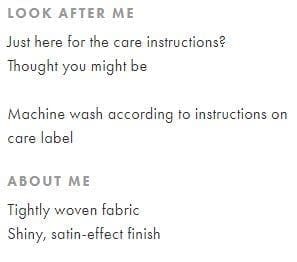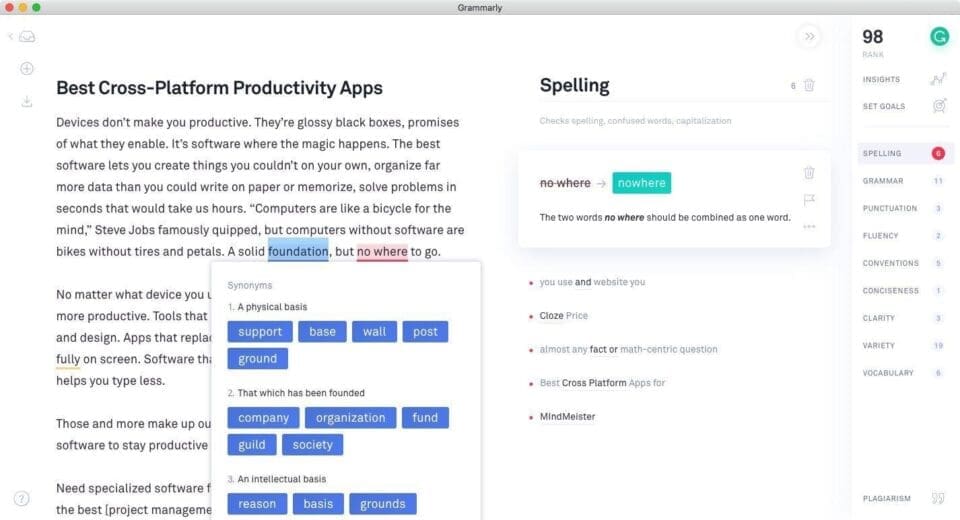SEO is very important for eCommerce. Why? Put most simply, it can boost an online store’s sales and revenue.
To become a market leader in your industry, make sure you have well-optimized content. If you miss out on clicks, you miss out on sales. In such conditions, focus on optimizing your eCommerce website to address the problem.
Below are the steps that you need to take. Maybe you won’t rank atop your most coveted SERP overnight, but you’ll certainly reach the largest possible audience.
Write Unique Product Descriptions and Meta Titles
Product descriptions make an eCommerce website look professional. But equally as important, these descriptions will explain what you’re selling and why it’s worth purchasing.
Prospective customers should be able to get all of the information they need to make a buying decision. Similar to other types of content, product descriptions are indexed by search engines.
Regardless of whether you’re selling cameras or clothes, your product descriptions MUST be unique.
One of the biggest mistakes we see with eCommerce businesses is using product descriptions sent over by the manufacturers. But think about it…if you are taking the easy way out and using pre-written descriptions, your competitors likely are using the same!
If you want to win in this scenario, you simply cannot use duplicate content to describe the products you are selling.
You should make an effort to stand out. One-of-a-kind product descriptions, together with tailored meta titles, will be much better at getting your products noticed.
The following three tips will help you when crafting product descriptions:
1. Optimize the Length of The Text
If the product is self-explanatory, you don’t need to write very long descriptions. 250 words will be enough to perform well on search engines.

2. Figure Out What Makes the Product Unique
Focus on the attributes and capabilities that make your offering stand out. Benefits motivate buyers to take action.
Keep in mind that you’re selling against similar (or maybe even identical) items in the market.

3. Clearly Define Your Brand’s Tone of Voice
Be mindful of what you say in writing. Even if your brand is professional, you can use a lighter, maybe even a more humorous tone, when describing products.


Take Advantage of Personalization
Personalization improves the eCommerce experience. Of course, it can also increase sales.
The best way to take advantage of these benefits is to embed personalization in your offers and content.
In the age of big data, it has never been simpler to personalize content. This is because you have all the details that you need right at your fingertips.
You can use customer data such as past purchases, browsing history, and social media activity to figure out what will appeal to each customer. This will help you make your marketing emails better.
Depending on how consumers behave, you can adjust your messages. Perhaps your assumptions about the data were incorrect.
I recommend you take a human-centered approach. To be more precise, develop solutions without neglecting the human solution.
Personalization is a journey and you only progress if you adapt to change. Open the door for actual relationships.
If you treat your customers like your friends, they’ll treat you well in return.
Focus on On-Page SEO
On-page SEO is one of the most important aspects of Search Engine Optimization (SEO). If you want your content to rank, do your best to optimize every page and post on your website.
But you can’t just take an old school approach, because on-page SEO for eCommerce isn’t just about placing keywords in the right places.
Here are the steps I recommend:
Use A Simple URL Structure
In case you were unaware, Google frowns upon overly complex URL structures.
While your first instinct might be to go with a detailed and structured URL, you might want to reconsider.
Short URLs are the best. In what follows, you have an example of an URL you should avoid using:
example.com/sports/football/europe/here-are-all-articles-about-football-in-europe-id4711-2jsv8x.html
Google crawls all sorts of URLs, even those that are a bit more complex. But their crawlers have to work harder to interpret and index this information. This is why you’ll want to make sure your URLs are short and to the point.
Don’t Underestimate the Power of Grammar and Stylistics
Why do grammar and stylistics even matter? If you find yourself asking this question, you don’t quite understand how search engines work.
Proper use of grammar, for instance, makes it easier for the search engines to read the text and grasp the message behind it. If you can use better grammar, your odds of ranking will improve.

Source: https://i.pinimg.com/originals/76/53/86/7653866172b25e01805492c02cd82b89.jpg
Give your content an extra round of review and editing, or find a good online tool to help double check it for you.
Any one of these web-based tools will help you correct grammar, spelling, punctuation, and stylistic errors.
Google has yet to confirm whether or not grammar and stylistics are “officially” ranking factors in their algorithms, but it’s better to be safe than sorry.
The better your eCommerce site is structured, the more visits you’ll get from shoppers. Make sure that every page is a maximum of three clicks away from the home page if at all possible.
Additionally, make sure that everything is simple. There should be a logic to where something goes on the website. Use a well planned out hierarchy to organize information across your domain.
If you improve the site’s navigability, you’ll no doubt do better on the SERPs. And you should expect to see an increase in your organic clickthrough rate (CTR) as well.
Use Internal Links Strategically
Internal linking helps move customers from one page to another. Plus, it provides clear pathways for Web crawlers to discover other content on the domain.
If you want to improve your internal linking strategy, here’s where to start:
Link to High-Priority Pages
Find a way to link the main categories, services, or products. If you’ve got a blog post that generates a large number of views and likes, include a link to the most important products or category pages.
Use Natural Anchor Text
If you want to succeed in modern times, you should focus on using natural anchor text for your internal links (i.e. anchors that are not stuffed with keywords). This positions you for better rankings.
The anchor text should look like part of a sentence. Minimize use of phrases like “click here” or “visit this website” if possible.
Use Breadcrumbs
Breadcrumbs are navigational aids that tell visitors where they are in the online store. They’re normally placed at the top of your web page templates.
Google has been adding breadcrumb navigation to mobile search results for some time now. And it’s not hard to understand why.
Optimize Your Calls to Action
Maybe your eCommerce website doesn’t lack calls-to-action (CTAs). That’s great, but are you sure you can’t improve your CTAs and get more conversions?
Weak CTAs can confuse potential shoppers and lose you important opportunities.
Ideally, CTA text should be short and to the point. Most importantly, it should create a sense of urgency.
In this sense, you can use phrases like “sign up today” or “sale ends tomorrow.” Tell your prospects directly what you are asking them to do, and you’ll likely see more conversions.

It’s a good idea to have your most important CTAs on the homepage. They’ll immediately pull people in and convert visitors into customers. Try this idea out for yourself and see if it provides lift.
Conclusion
All in all, an eCommerce website is still a website. Just like with other types of sites, you need to make it more attractive, useful, and actionable to users.
If you do your part well, you shouldn’t have to worry about low conversions. Actually, I’d expect that you won’t have any problems at all.
All Images provided by the author under his or her own license.
Disclaimer: The views and opinions stated in this post are that of the author, and Return On Now may or may not agree with any or all of the commentary.
This guest post brought to you courtesy of Return On Now, Professional Austin SEO and PPC Services Company.
Diana Nadim
Latest posts by Diana Nadim (see all)
- Content Optimization for eCommerce: The Complete Guide - April 21, 2020





